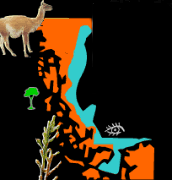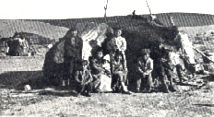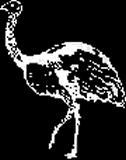
Welcome to the Aonikenk Region. Here you will find interesting information about this Chilean Indigenous People, also denominated Tewelche People. The region contains four main subjects: People (History, Social Organization, environment), Language (Gramma, Vocabulary), Customs (Spiritual World, Rituals, Mythology) and Art. Use the Interactive Map to take an animated tour of this people´s region. The teachers and students will find contents (texts and images) that be able for Printing.
There is also a Resources section in which you will find a virtual Library with Dictionaries, Texts, Books and a complete Links Directory. In addition you could listen to music or watch documentaries in our Videos, Music and Storytelling sections. Finally if you have a question relating to something other than one of these topics, you can use our Search Engine or the Site Map or write to us through the Contact form. You are cordially invited invited to Subscribe our monthly Newsletter to be informed about the site and our Chilean Indigenous Cultures news.

The Pretty House was similar to the shelter of the Aonikenk, but instead of being covered with a guanaco skin it was decorated with new ponchos, cushions, ostrich feathers, rattles and bells with blue, red and yellow beads.
Inside they restricted the bride's food, limiting her fat consumption. Generally the maternal grandmother or grandfather accompanied her, educating and advising her in her new adult role. The bride learned the moral codes of her community and the daily activities, such as washing, cooking, weaving and caring for children.

Along with the rhythmic sound of drums, flutes, musical bows and Aonikenk songs, the Ostrich Dance began.
The men who participated in the ceremony came out in a line from under a tarp. With their bodies covered with animal skins and wearing ostrich feathers on their heads, they started walking around the fire, closing in until touching each other, and then backing up with movements that imitated the ostrich and guanaco.
Collective songs and shouts conjured up the powers and forces of evil. The rhythm of the dance rose until they were transformed into hunted animals, the men shedding their animal skins and showing off their strong painted bodies. They danced only with a belt made of ostrich feathers, seashells and bird beaks.